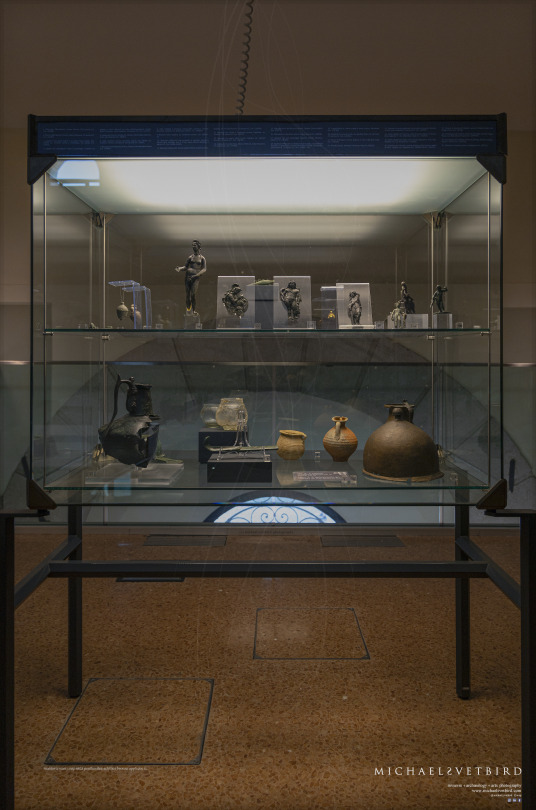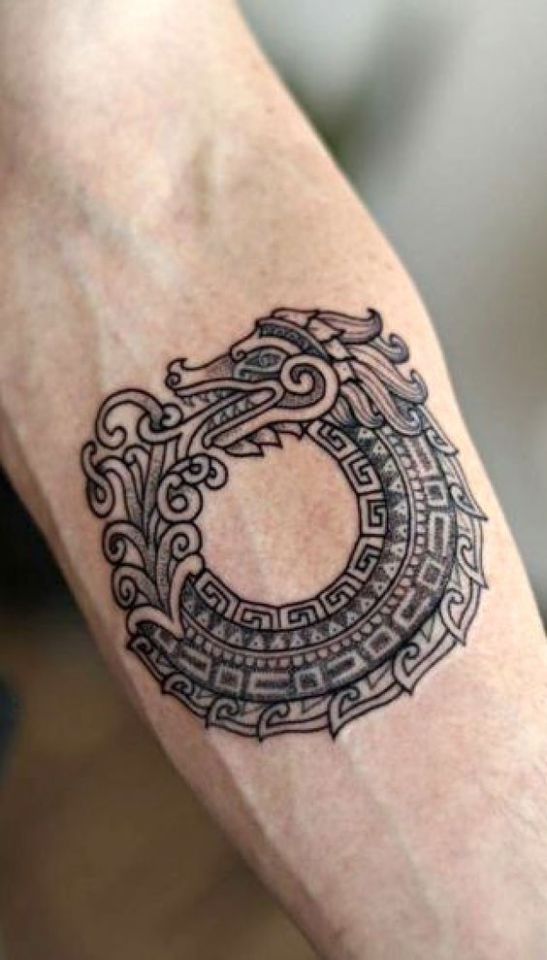#ancientart
Explore tagged Tumblr posts
Text

Ancient Roman Tintinnabulum
Bronze, circa 1st century AD
#ancient art#ancientart#roman art#bronze sculpture#ancient bronze#roman bronze#tintinnabulum#ancient rome#ancient roman art#ancient sculpture#phallus#art#artwork
2K notes
·
View notes
Text

Drawing of Sasanian rock relief: Ardashir I (r. A.D. 224-241) and the Zoroastrian divinity Ohrmazd [Ahura Mazda] at Naqsh-i Rustam, southern Iran, Lutf-'Ali Shirazi Iranian, 1812. MET (ID: 1998.6.3). This drawing of a Sasanian rock relief at Naqsh-i Rustam, Iran, depicts the investiture of Ardashir I (r. 224-241), who receives the ring of office from the supreme Zoroastrian god Ohrmazd, also known as Ahura Mazda. Both king and god are on horseback; the king wears a caftan, the prestigious riding costume of the Sasanian period, and his fan-bearer stands behind him. The horses trample the bodies of the last Parthian king, Ardavan, and the Zoroastrian evil spirit Ahriman. The drawing is one of several in the Metropolitan’s collection made by an Iranian artist Lutf-'Ali Shirazi (1998.6.1; 1998.6.2; 1998.6.4): they are comparable to renderings of Sasanian carved and rock monuments produced by early European travelers to Iran. (MET)
#iran#iran history#iran art#iran culture#persia#ancient persia#zoroaster#persian history#persianart#persian culture#ancient#ancienthistory#ancientart#ancient culture#sasanian#sasanid#sassanid#sassanid empire
23 notes
·
View notes
Text

Love and Friendship. Roman Baths: A Meeting Place for Leisure and Sport
Roman baths in ancient Rome were public facilities that were visited by people of all social classes and walks of life. They were a place for socializing, relaxation, and personal hygiene.
The Romans had a relatively liberal attitude towards sexuality. Same-sex relationships were not prohibited, and they were often accepted. In some cases, they were even seen as positive.
In Roman baths, there were sometimes sexual encounters between men. This often happened between men of the same social status. However, it was also common for men from different social classes to have sexual relationships with each other.
Young men often went to the baths together to socialize, exercise, and relax. It was not uncommon for young men to be naked together in the baths. This was seen as a sign of camaraderie and friendship.
There is also evidence to suggest that there were occasional sexual encounters between young men in Roman baths. However, this did not always happen. In some cases, the young men were simply friends who were spending time together.
Text AI Bard Base draft image: Generated with StableDiffusion v1.5 (modul mix) Postwork: out/inpaint composing with CS Paint and Automatic1111 (using different moduls, partial manual up/downscale to recalculate better details), manual composing and correction paint over with CS Paint.
152 notes
·
View notes
Text
Bronze Age sarcophagus lid

ITEM Sarcophagus lid MATERIAL Pottery CULTURE Bronze Age, Canaanite PERIOD 1400 - 1200 B.C DIMENSIONS 270 mm x 157 mm x 35 mm CONDITION Good condition PROVENANCE Ex Museum Exhibiton of the Arbeitsgruppe für Biblische Archäologie, Germany (Deaccession) The Canaanite sarcophagus lid is an extraordinary artifact that sheds light on the burial practices and artistic traditions of the ancient Canaanite civilization, which flourished in the Levant region from the Bronze Age to the Iron Age. These lids, typically crafted from stone such as limestone, were designed to cover sarcophagi, or stone coffins, that housed the deceased. The lids often featured intricate carvings and reliefs, reflecting both the artistic abilities of the Canaanites and their beliefs about the afterlife. Many Canaanite sarcophagi, particularly from the Late Bronze Age, show a fusion of Egyptian and local Canaanite influences, indicating the strong cultural exchange between these civilizations. One notable characteristic of Canaanite sarcophagus lids is the stylized human face or mask often carved into the stone. This representation of the deceased, though somewhat abstract, was believed to honor and preserve the identity of the individual in the afterlife. The facial features, typically simple and symmetrical, were not highly personalized but followed conventional designs, which might have reflected the Canaanite belief in the continuity of the soul beyond physical death. Read the full article
#ancient#ancientart#ancienthistory#artefact#artifact#ancientartifacts#antiquities#antiquity#art#artobject#ancientworld#history#classical#archaeology#pottery#vessel#canaan#bronzeage#sarcophagus#lid#egypt#egyptian
8 notes
·
View notes
Text






























December auction featuring quality examples of edged weapons, antique firearms, armour parts as well as ancient pre-Columbian. Wide variety of jewelry. Fossils and minerals. Filipino and African lots. Chinese and Korean pottery. There's something for everyone
#artifacts#antiques#ancientart#antiqueguns#antique#archaeology#antiquedecor#history#archeology#ancient
4 notes
·
View notes
Text


This red-figure kylix depicts the famous myth of Oedipus (inscribed as Oidipodes), dressed as a wayfarer, seated and listening to the riddle posed by the Sphinx of Thebes. Part of the riddle is written, in a style reminiscent of a comic strip: kai tri[poun]. The Sphinx, known to devour those who fail to answer correctly, will take its own life once Oedipus solves the riddle.

The scene foreshadows the tragic fulfillment of the Oracle of Delphi’s prophecy: Oedipus unknowingly kills his father, Laius, and later marries his mother, Jocasta, Queen of Thebes. Both father and son attempted to avoid their fates—Laius by abandoning his infant son on a mountainside and Oedipus by fleeing Corinth and his adoptive family—but their destinies were inexorably intertwined.
This vessel, named after the Painter of Oedipus, reflects the style of the Attic ceramist closely associated with the late period of Douris.
Origin: Vulci Dating: Circa 470 B.C. Material: Painted red-figure ceramic Dimensions: Height 7.2 cm; Diameter 26.3 cm Catalogue Number: 16541
#ancientart#oedipus#atticceramics#redfigurepottery#greekmythology#sphinx#tragicmyths#classicalart#archaeology#vulci#dourisstyle
3 notes
·
View notes
Text










Excited to share the latest addition to my #etsy shop: Wood mjolnir wall hanging. Wood Thor hammer viking decor. Mammen style mjolnir wood carving.
#MjolnirVikingJewelry#Mjolnir#WoodCraft#NorseArt#VikingDecor#ThorHammer#WallArt#HandcraftedDecor#Woodworking#NorseMythology#VikingStyle#HandmadeArt#HomeDecor#ScandinavianDesign#ArtisanCraft#UniqueDecor#WoodCarving#VikingCulture#AncientArt#RunicArt#DecorativeArt#etsy#exclusivejewelry#likeaviking#vikingjewelry#vikingdesign#silverwork#norse#handmade#vikingart
2 notes
·
View notes
Photo



• PENTHESILEA and Achilles: Applique, a bronze decorative miniature relief "con Achille e Pentesilea", From Etruscan burial site in Casaloldo [near Mantova], 1-2 AD.
"Signs of Rome in Daily Life" case [1st floor],
Museo Archeologico Nazionale di Mantova | MANM PDM Web : https://mantovaducale.beniculturali.it/it/museo-archeologico MANM is a part of Palazzo Ducale Mantua - FB : https://www.facebook.com/DucaleMantova - IG : @palazzoducalemantova - TW : @PalazzoDucaleMN
MANM PDM | @michael-svetbird phs ©MSP Michael Svetbird | 07|05|23 6200X4100 600 [I., II.] The photographed object is the collection item of MANM PDM | Comune di Mantova and subject to copyrights. [non commercial use | sorry for the watermarks]
📸 Part of the "Mythology-inspired Small Format Sculpture & Miniature Artefacts" MSP Online Photo-gallery:
👉 D-ART: https://www.deviantart.com/svetbird1234/gallery/69450077/small-format-sculpture-and-miniature-artifacts
👉 FB | Album: https://www.facebook.com/media/set/?set=a.859777984390780&type=3
.
#mantova#mantua#palazzoducalemantova#archaeologicalmuseum#historymuseum#ancientart#etruscan#ancientrome#antiquity#archaeology#mythology#ancient#arthistory#museology#amazonomachy#penthesilea#πενθεσιλεια#pentesilea#achilles#amazons#oiorpata#heritage#sculpture#relief#archaeologyart#photogallery#photography#archaeologyphotography#museumphotography#michaelsvetbird
49 notes
·
View notes
Text

Maya Ink Magic: Creative Tattoo Idea
#MayaTattoo#TattooIdeas#InkArt#CreativeInk#MayanCulture#TattooInspiration#AncientArt#MesoamericanInk#MayanDesigns#BodyArt#TattooInspo#InkMagic#MayanHeritage#TattooTrends#ArtisticInk
3 notes
·
View notes
Text
Did Europe’s First Civilization Leave Behind a Secret Code? The Untold Story of the Vinca Civilization

The Silent Pioneers of Prehistoric Europe: Beneath the fertile soils of modern-day Serbia, Romania, and Bulgaria lies a mystery older than the pyramids: the Vinca Civilization. Flourishing between 5700–4500 BCE along the Danube River, this enigmatic culture pioneered Europe’s first proto-cities, mastered metallurgy, and left behind cryptic symbols that still baffle archaeologists. Who were these people, and why did their advanced society vanish? Let’s unearth their story.
Origins & Expansion: The Dawn of Urban Europe The Vinca emerged during the Neolithic era, transitioning from nomadic life to settled farming communities. Their largest settlement, Vinča-Belo Brdo (near Belgrade), grew into a 10-meter-high tell (mound) by 5300 BCE, housing thousands in multi-room homes built with timber and clay. Unlike contemporaneous Mesopotamian villages, Vinca settlements lacked fortifications, suggesting a society reliant on cooperation over conflict.
Political Structure: A Society Without Kings? No grand palaces or royal tombs have been found, hinting at an egalitarian or clan-based governance. Centralized storage pits and communal plazas imply collective decision-making, possibly led by priestly elites overseeing rituals. The absence of weapon stockpiles reinforces theories of a peaceful, trade-focused society.
Archaeological Marvels: Copper, Symbols, and Mega-Villages Copper Smelting (5000 BCE): Vinca metalsmiths were Europe’s first to smelt copper, crafting tools and jewelry that revolutionized regional trade. The Vinca Symbols: Over 700 abstract glyphs appear on pottery and figurines. While not a full writing system, these marks likely encoded ritual or ownership data—a “proto-writing” system predating Sumerian cuneiform. Urban Planning: Streets aligned with seasonal sun positions, clay-lined granaries, and elevated homes to combat Danube floods.
Economy & Trade: Europe’s First Marketplace The Vinca dominated Balkan trade networks, exchanging copper tools, obsidian blades, and salt-cured meats for Aegean seashells and Carpathian gold. Their pottery, painted in geometric black-on-red designs, became a status symbol across Neolithic Europe.
Art & Spirituality: Goddesses and the Cosmic Dance Vinca art reveals a deep connection to fertility and nature: Figurines: Thousands of clay “goddess” statuettes with exaggerated hips and masked faces suggest rituals invoking earth deities. Ritual Objects: Altars with charred animal bones and symbol-inscribed amulets hint at shamanistic practices.
Societal Wellness: Health in the Stone Age Analysis of skeletal remains shows the Vinca enjoyed robust health, with diets rich in wheat, lentils, and fish. However, tooth wear from grinding grain and occasional fractures from manual labor reveal the era’s hardships.
Technological Legacy: Blueprint for the Bronze Age Metallurgy: Their copper axes and chisels set the stage for later metalworking cultures. Ceramic Kilns: High-temperature ovens produced durable pottery, a technique later adopted by the Greeks.
Decline: Climate, Conflict, and the Curtain Fall By 4500 BCE, the Vinca faced a perfect storm: Climate Shifts: Prolonged droughts reduced crop yields. Deforestation: Over-farming depleted soils. Invasions: Horse-riding steppe tribes (possibly Proto-Indo-Europeans) overran their undefended settlements. By 4000 BCE, their culture dissolved, absorbed by incoming migrants.
Cultural Impact: Echoes in Modern Europe Though forgotten for millennia, the Vinca’s innovations reverberate today: Symbols & Writing: Their glyphs inspire theories about Europe’s earliest symbolic communication. Urban Model: Their planned villages influenced later Balkan and Mediterranean settlements.
Conclusion: Why the Vinca Still Matter The Vinca challenge our assumptions about “primitive” Neolithic life. Their mastery of metallurgy, trade, and symbolic expression laid groundwork for European civilization. Yet their greatest legacy is the unanswered question: Were their symbols a lost language? Until we crack their code, the Vinca remain silent pioneers, whispering secrets from the dawn of time.
Vinca Civilization, Ancient Europe, Proto-Writing, Copper Age, Danube Valley, Histories Secret.
#lostcivilizations#archaeology#art history#historiessecret#ancienthistory#19th century#histories-secret#ancienttrade#AncientMysteries#Archaeology#LostCivilizations#Prehistory#AncientTechnology#NeolithicEurope#HistoryUncovered#AncientArt#MysteryOfHistory#CulturalHeritage
1 note
·
View note
Text
Art has no breath but the Artist takes a breath to create a work of art.
Your breath will tell the Artist on how you feel about the work of art
- Ancientartsquote
0 notes
Text

Gilt terracotta ornaments from a necklace, from Mycenae (?), Mycenaean, ca. 1400–1050 BCE. MET (ID: 39.11.2). Eight petaled rosettes and one pendant in the shape of a formalized flower. Similar rosettes have been found at Dendra, Asine, the Argive Heraion, Mycenae, Menidi, and in Crete at Phaistos.
#ancient#ancienthistory#ancientart#greece#ancientgreek#ancientgreece#mycenae#mycenaean#antiquité#antichità#archeology#bronzeage#ancient history#archaeology#art history#hellenism#ancient greece
34 notes
·
View notes
Text

The last Kiss before the Battle
In ancient Greece, homosexuality was not taboo. In fact, it was sometimes even encouraged. The Greeks believed that male love made warriors stronger and more determined.
The Sacred Band of Thebes, also known as the Theban Sacred Band, was a notable military unit in the 4th century BC. This elite unit consisted of 150 warriors, all of whom were members of the noble class. Under the leadership of Epaminondas, a brilliant Theban general, the Sacred Band was trained to be a formidable fighting force. It was also known for its openness towards homosexuality.
Its fame is primarily based on its outstanding performance in the Battle of Leuctra in 371 BC. In this historic conflict, they managed to defeat the then-powerful Spartans. Epaminondas encouraged his men in this decisive battle with inspiring words: "We will either defeat the Spartans today or die in battle." These words are testament to the determination and courage that characterized the Sacred Band.
Another significant moment in its history took place in the Battle of Mantinea in 362 BC. Here, Pelopidas, who was leading the Sacred Band at the time, is said to have encouraged his men with the words: "We are the best warriors in Greece, and we will fight for our freedom today." This commitment to freedom and self-belief helped to solidify the unit's legendary reputation.
At the time of the Sacred Band and the Battles of Leuctra and Mantinea, homosexuality was viewed differently in Greek society than it is today. In fact, it was sometimes even encouraged, especially among the Spartans, who believed that love between men enhanced their fighting prowess. In ancient times, Greek culture was known for its acceptance and openness towards same-sex relationships. This cultural aspect allowed such love relationships, like the one between the two lovers, to be lived in a certain way freely, without the social stigmas that arose later in history.
#gayart#gaycomic#ancient#romanbaths#ancientrome#ancientart#lgbt#loveandfriendship#gayhistory#AncientGreece#HistoricalLove#LGBTQHistory#WarriorsOfThebes#LoveAndWar#SacredBand
90 notes
·
View notes
Text
Roman head of a Satyr

ITEM Head of a Satyr MATERIAL Marble CULTURE Roman PERIOD 1st - 2nd Century A.D DIMENSIONS 152 mm x 110 mm x 103 mm (without stand), 195 mm x 118 mm x 111 (with stand) CONDITION Good condition. Includes stand PROVENANCE Ex American private collection, New York, acquired before 1980s Roman satyrs were mythological creatures derived from Greek mythology but adapted to fit Roman artistic and literary traditions. Originally, satyrs were depicted as wild, half-human, half-goat beings associated with the god Dionysus (Bacchus in Roman culture), revelry, and untamed nature. In Roman art, they were often shown with human upper bodies, goat-like legs, and small horns on their heads, embodying both the pleasures and excesses of Bacchic festivities. These figures appeared frequently in Roman frescoes, mosaics, and sculptures, often engaged in music, dance, or pursuit of nymphs, reflecting their role as symbols of indulgence and hedonism. In literature and drama, satyrs were linked to comedic and theatrical traditions, particularly in satyr plays, which were a mix of tragedy and farcical humor. Though these plays originated in Greece, the Romans incorporated satyrs into their own theatrical performances and poetry, where they served as mischievous, often lustful figures mocking human folly. Roman poets such as Horace and Ovid referenced satyrs in their works, sometimes using them to explore themes of desire, nature, and the contrast between civilization and the wild. Read the full article
#ancient#ancientart#ancienthistory#artefact#artifact#ancientartifacts#antiquities#antiquity#art#artobject#ancientrome#ancientworld#history#classical#archaeology#roman#marble#head#satyr#faun#bacchus
4 notes
·
View notes
Text






























Check out these amazing historical weapons from around the world, how amazing are all of these?
#antiquedecor#ancientart#antique#antiqueguns#archaeology#invaluable#antiques#artifacts#history#ancient#swords#daggers#ancient warfare#ancient warrior
2 notes
·
View notes
Text

An Altar Full of Symbols
An altar with cavities designed to hold the ashes of Caius Julius Saecularis. The deceased is depicted in a niche shaped like a shell, wearing only a short cloak. He holds a butterfly and a small peacock, while a dog and a monkey sit at his feet.
On either side of the altar, a fruit-laden tree supports a bird, and a tall candelabrum rises above. Two butterfly-winged cupids hold the inscription, while the entire decoration carries strong allegorical meaning related to life's attachment and the fragility of mortal existence.
Origin: Tusculum, formerly in the Villa of Giulio on the Via Flaminia. Dating: Mid-1st century AD.
#ancientart#romanempire#symbolism#commemorativereliefs#romanaltars#allegoricalart#archaeology#romanhistory#artandlife
3 notes
·
View notes